Every year, cosmetic eyelid surgery ranks among the top five most commonly performed cosmetic surgeries. Lower eyelid surgery for under eye bags caused by prolapsed orbital fat affects a wide age range.
Puffiness under the eyes is commonly caused by both genetics, and aging. I’ve personally treated three generations of the same family as an example of the genetic aspect of under eye bags. Since so many people want this procedure, the law of supply and demand sees more surgeons willing to perform lower eyelid surgery.
Regardless of whether patients seek Board-certified plastic surgeons or other types of surgeons, many people have their eyes pulled downward after cosmetic eyelid surgery. I’ll explain why eyelids are pulled down or retracted after lower eyelid surgery, and how I avoid this problem when I perform surgery on patients with under eye bags.
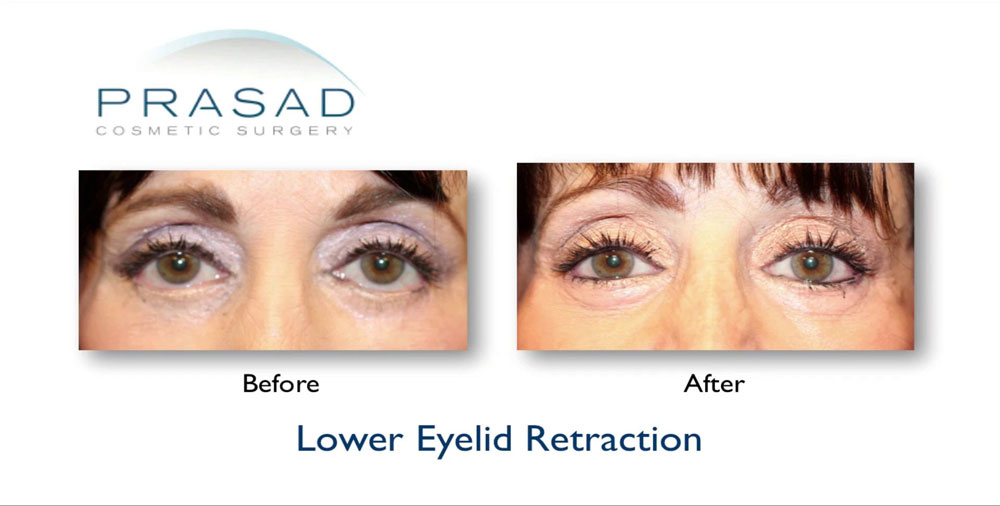
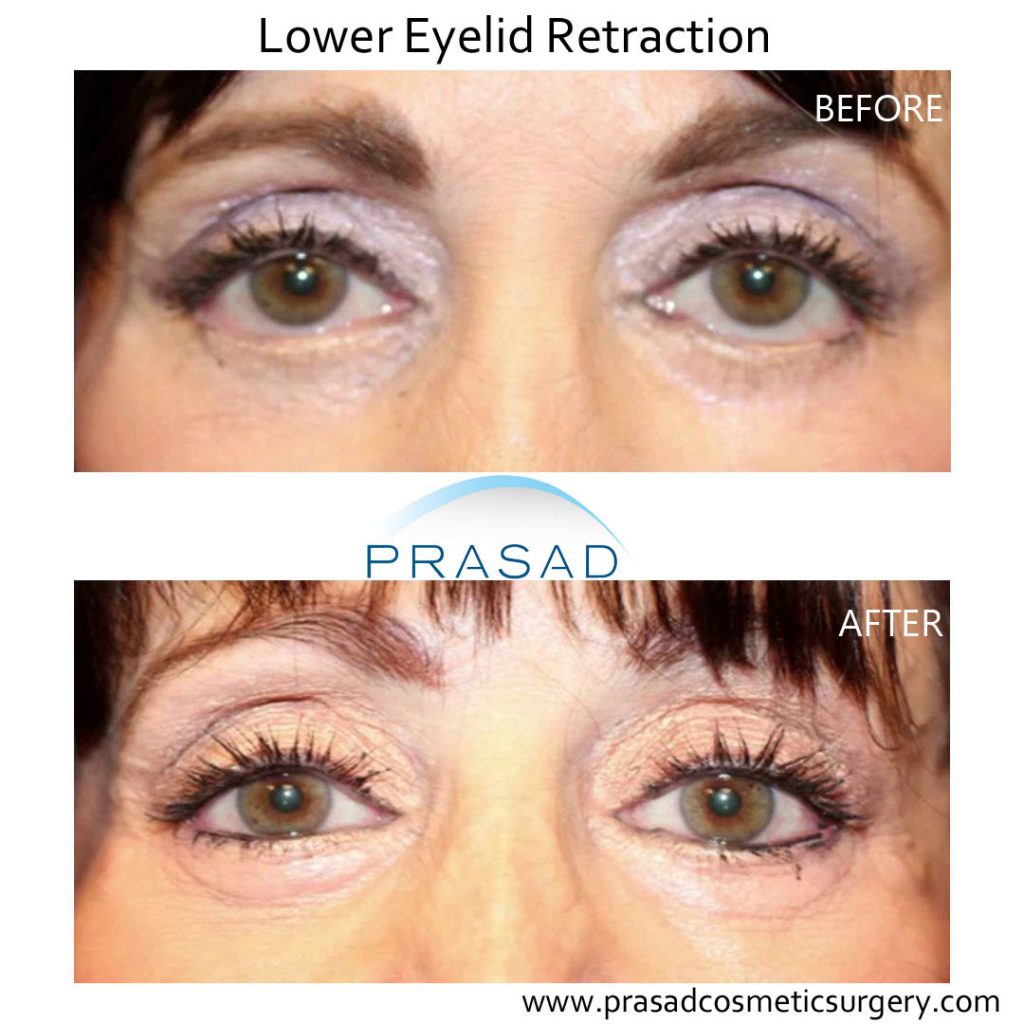
As an oculofacial plastic surgeon, I specialize in cosmetic eyelid surgeries such as under eye bags, hooded upper eyelids, as well as eyelid procedures that general plastic surgeons typically do not perform, such as lacrimal gland prolapse and eyelid ptosis. I frequently perform revision eyelid surgeries to address surgical complications caused by previous doctors, such as lower eyelid retraction. and ectropion.
Lower Eyelid Retraction After Blepharoplasty
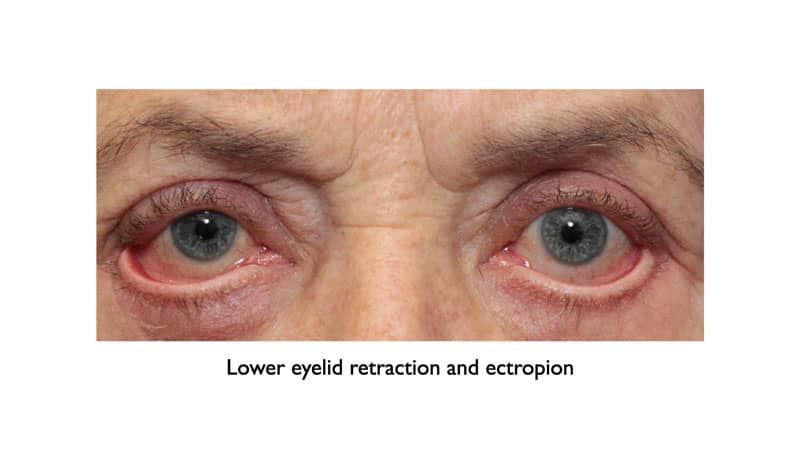
What Causes Eyelid Retraction
The most common reason for eyelids being pulled down after cosmetic eyelid surgery, in my opinion, is the way most surgeons perform lower eyelid surgery. Transcutaneous blepharoplasty is the most commonly used technique. This surgical technique involves making an incision along the lower eyelid skin, usually just below the eyelashes, in order to access the prolapsed orbital fat pockets that cause eye bags to sculpt, and remove the fat. This approach can compromise the orbicularis oculi muscle, as well as the lateral canthal tendon, which are important for lower eyelid support. Loss of the integrity of these supporting structures can cause the lower eyelid to collapse, leading to the rounding of the eyes known as lower eyelid retraction. In addition, the lower eyelids can also evert outward, a condition called ectropion.
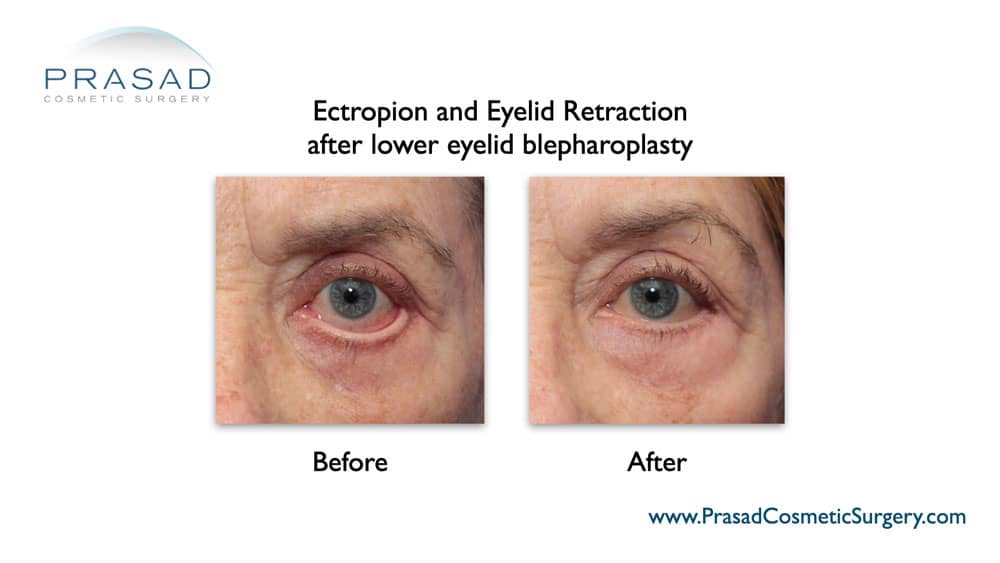
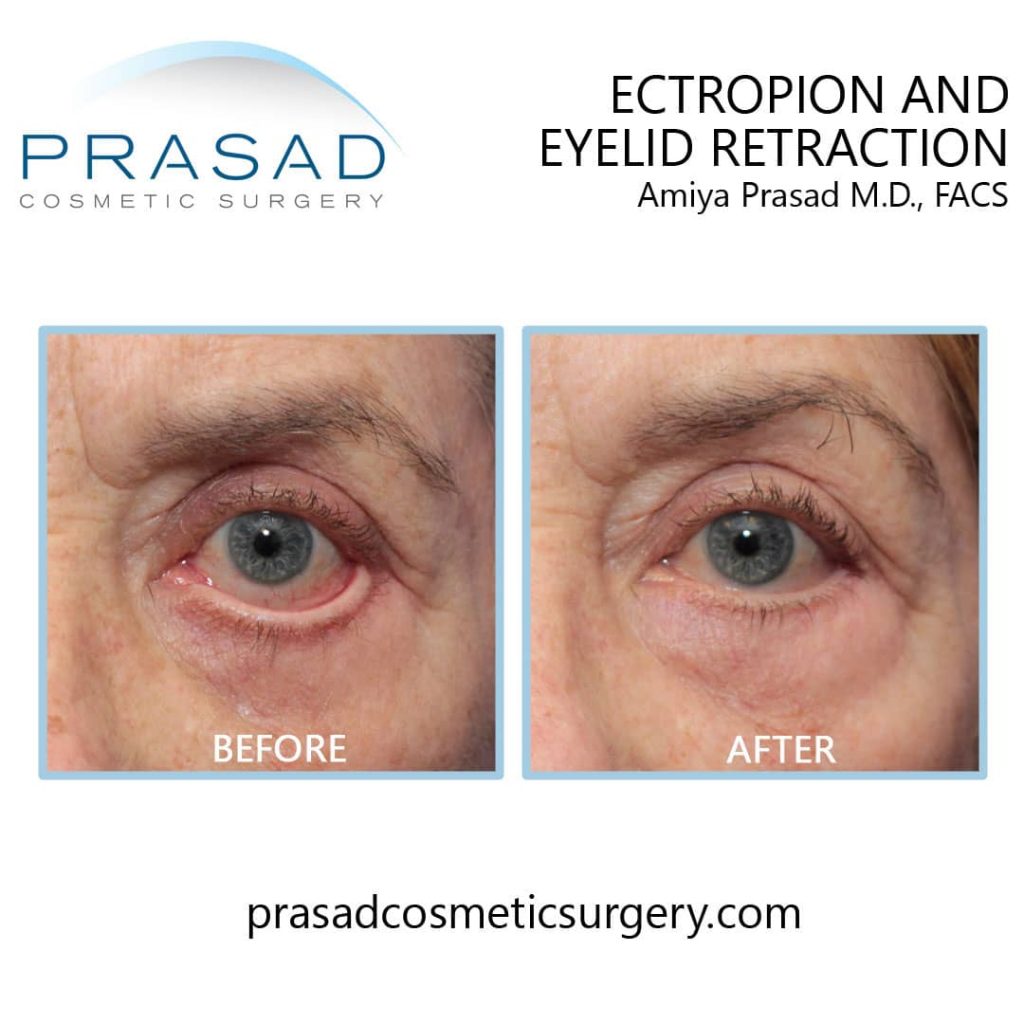
How Lower Lid Retraction is Avoided
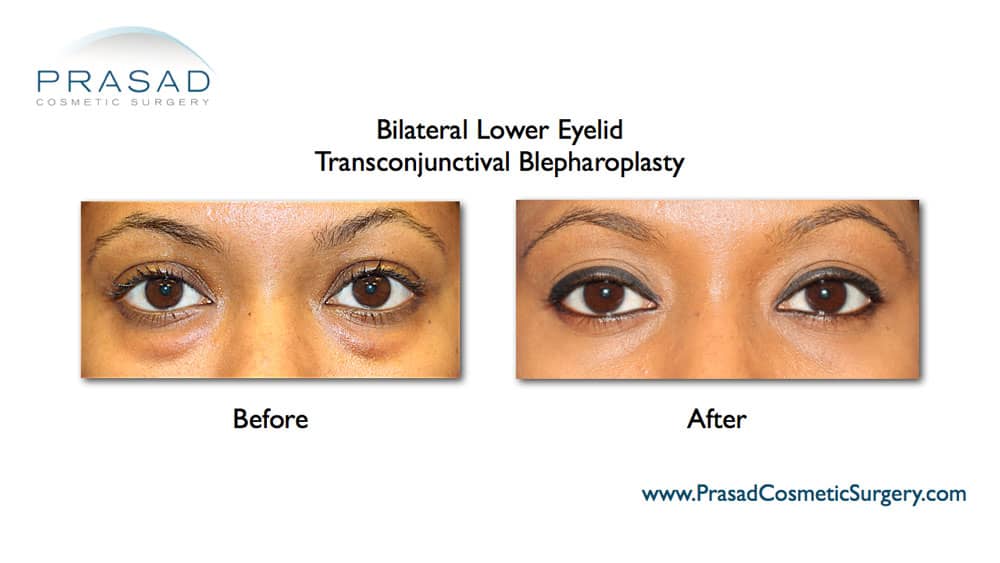
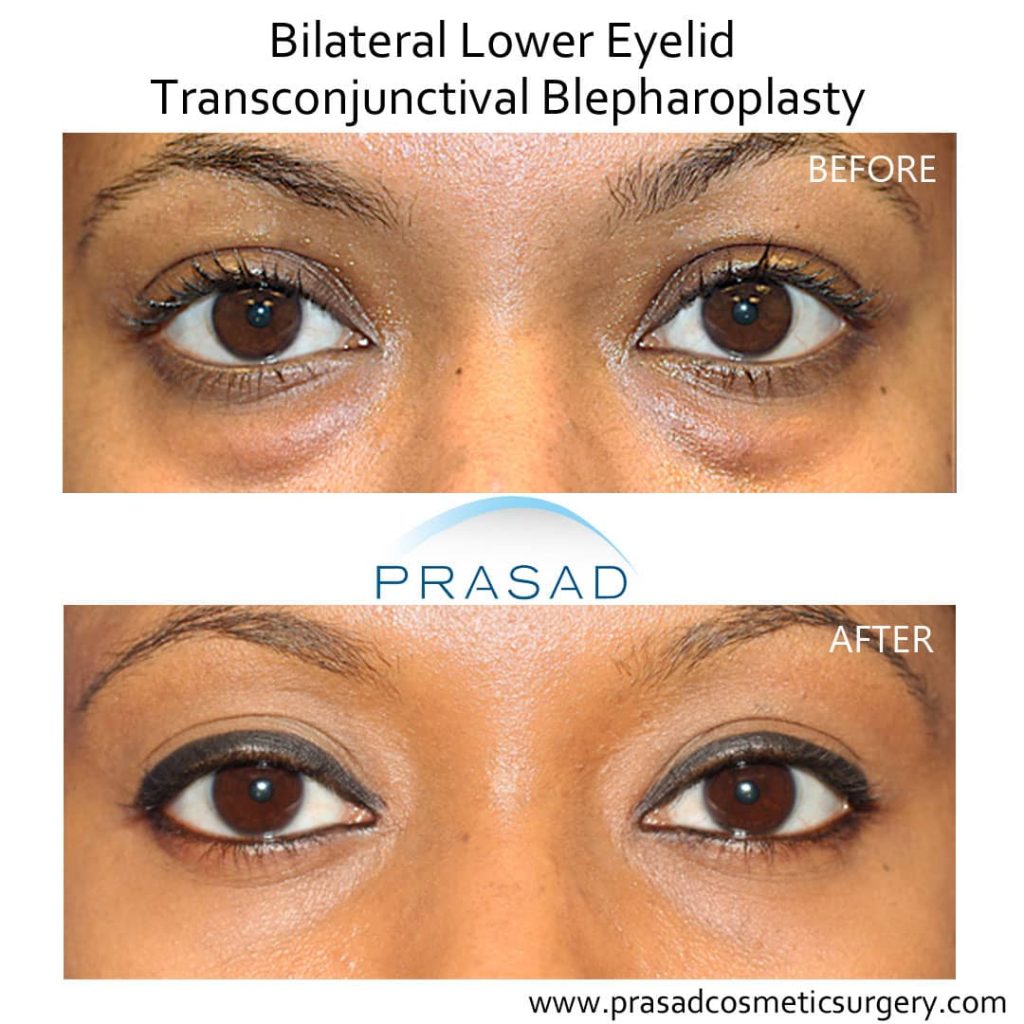
The Risks of Skin Excision for Lower Eyelid Wrinkles
The removal of skin to address skin wrinkling is another factor that contributes to eyelid retraction and ectropion. Surgeons frequently believe that under eye wrinkles are caused by redundant lower eyelid skin, just as hooded eyelids are caused by stretched upper eyelid skin. In my experience, wrinkles under the eyes are caused by poor skin quality rather than an abundance of skin. When a surgeon excises the lower eyelid skin, it can result in a skin shortage, causing the lower eyelid to round or retract.
I routinely treat eyelid skin wrinkling with fractional CO2 lasers, fractional erbium lasers, and radio frequency thermal energy. I like to supplement laser and radiofrequency treatments with PRP, or platelet rich plasma. Platelet-rich plasma is a concentrated form of your blood’s wound healing and growth factors that stimulate collagen production and improve skin quality.
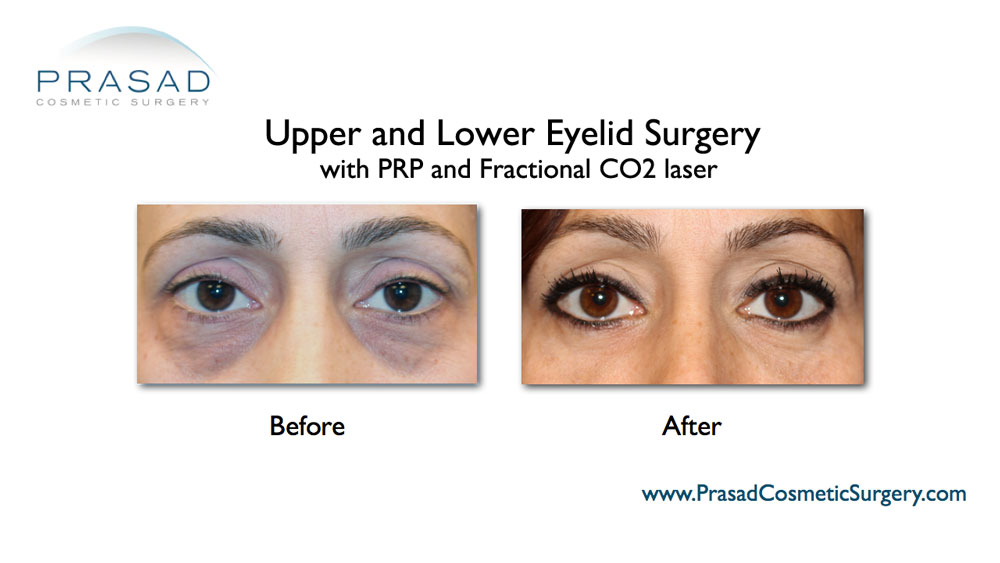
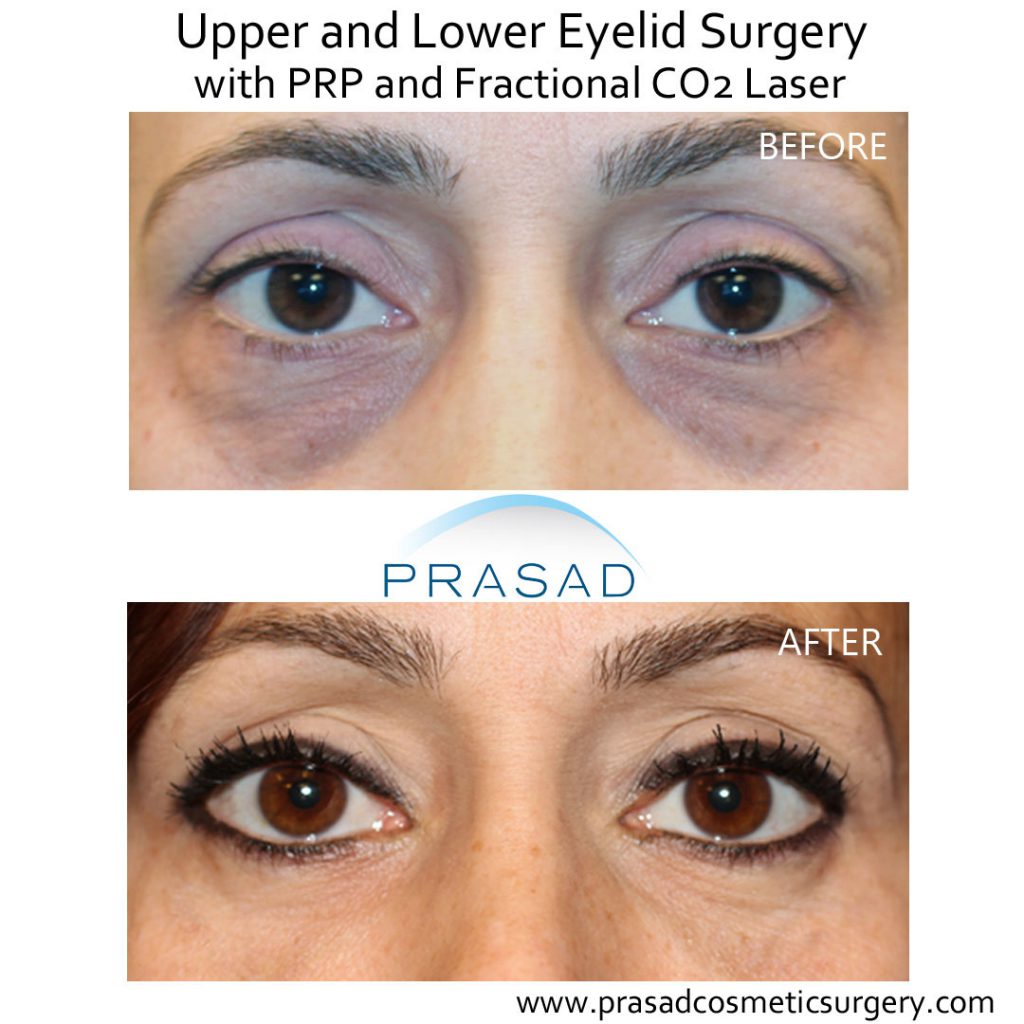
Lower Eyelid Surgery: Why It Matters Who Performs It
As a specialist, I understand that general plastic surgeons and other non-specialized surgeons typically perform lower eyelid surgery as a small percentage of their practice, which more typically is focused on more popular body procedures such as liposuction and tummy tucks. As a specialist with an ophthalmology background, I can’t emphasize how important it is to have eyelids that look good and function properly. Maintaining your eyes’ characteristic shape and having your lower eyelids work to protect your eyes is critical to your eye health and appearance.
Lower Eyelid Retraction Treatment
Dr. Amiya Prasad is a Board-certified cosmetic surgeon, and Fellowship-trained oculofacial plastic and reconstructive surgeon. He’s been in practice in New York, and Long Island for over 25 years. If you’re interested in recommendations for your individual situation, you may contact us by filling out the form below, or call any of our offices at (212) 265-8877 in Manhattan, New York City; (516) 742-4636 in Garden City, Long Island; or (703) 356-1336 in Vienna, Virginia to schedule a consultation.
